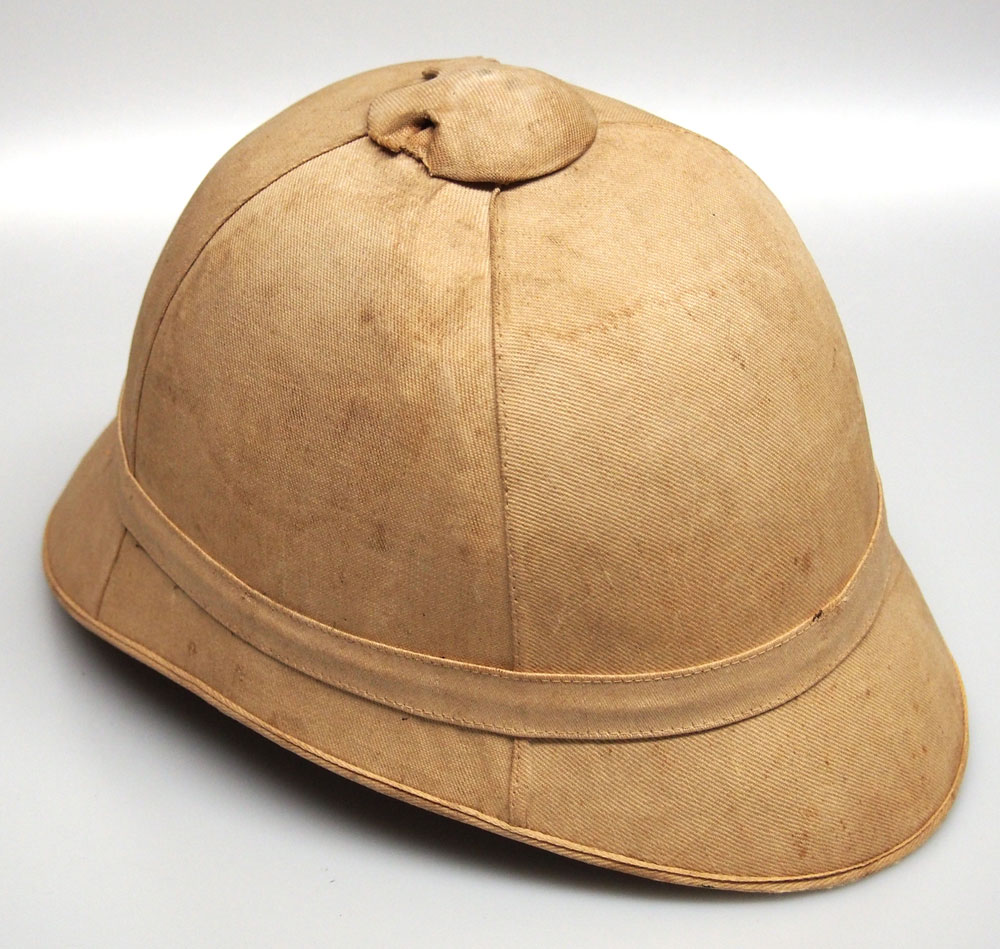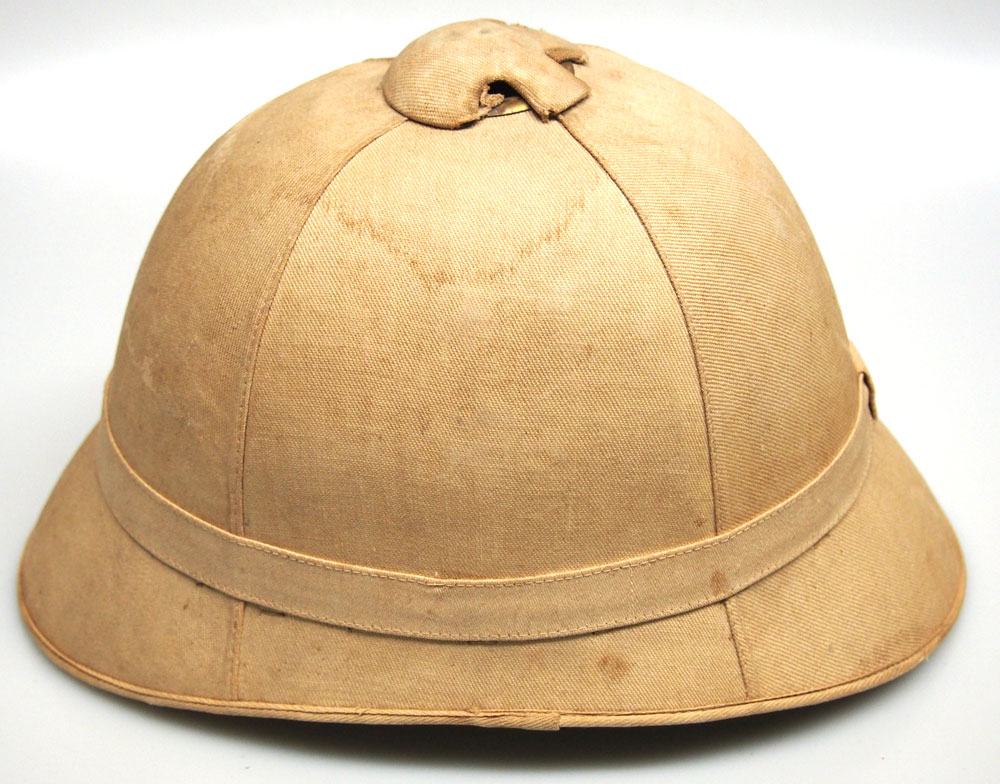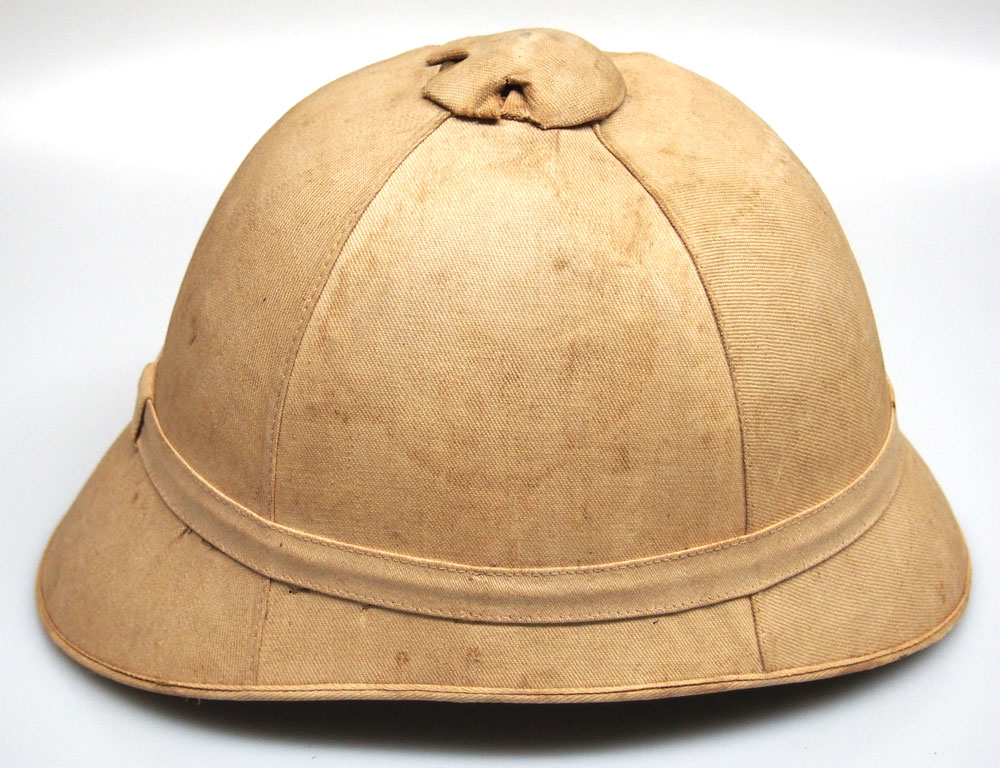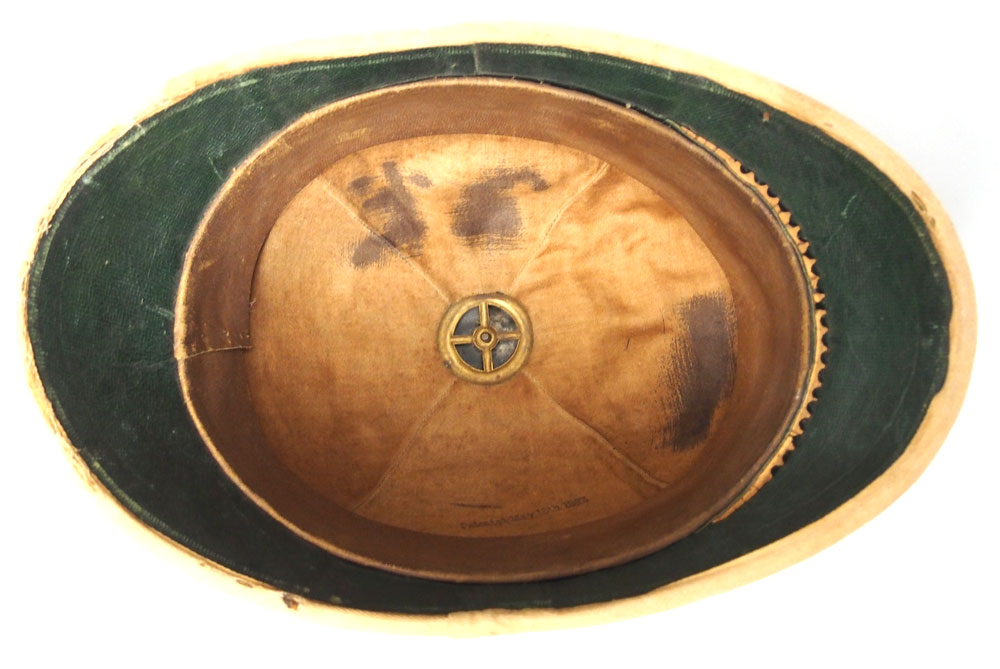 Understanding the sun helmets of the U.S. Army and even the United States Marine Corps that were used during the 19th century is rather simple as it comes down to the Model 1880, Model 1887 and Model 1989 helmets. These were the three main helmets used by regular Army – while the USMC did apparently use the Model 87/89 to some extent.
Understanding the sun helmets of the U.S. Army and even the United States Marine Corps that were used during the 19th century is rather simple as it comes down to the Model 1880, Model 1887 and Model 1989 helmets. These were the three main helmets used by regular Army – while the USMC did apparently use the Model 87/89 to some extent.
Where the issue is harder to understand is when it comes to the militias and National Guard units. While it is known that several patterns existed for these as well, most seem to be fairly uniform and follow the same basic parameters of the Army style helmets. These were four seams, with a front/back and side seams. Now another helmet was found that turns all this on its axis!
At the 2018 Baltimore Antique Arms Show this unique helmet was offered for sale and what makes it unique is that the shape is close but not exactly the same as the Model 1880. The side brims don’t slope as much but the front and rear brims are also less pronounced. In this regard it is similar to some of that National Guard helmets – but has less of a pointed front brim.

A side view of the helmet shows that the seams aren’t in the traditional placement usually seen in American sun helmets of the 19th century.

The helmet has a less pronounced front and rear brim than the Model 1887/89.
This helmet has a stamp inside that notes a May 15, 1882 patent date but there are no maker/retailer stamps or labels. The helmet is a thin cork and there is some cracking unfortunately – but all this suggests American manufacture as the British/Canadian helmets of the era were of a sturdier cork construction. The positioning of the seams is however similar to some British/Canadian four panel helmets.
The stitching and fabric appear to be similar to the American Army helmets, but what is also unique is that the helmet has a light khaki color. It most certainly wasn’t originally white that yellowed, but as a khaki it is lighter than the khaki of the American Model 1889 helmets.

The interior is also unique in that the headband lacks the typical cork spaces to provide ventilation. In addition, most American helmets have a green felt covering on the inside of the brim – but this one is a thicker wax/oil cloth.
Was this possibly a helmet developed for export to Canada, or was it a Canadian helmet imported to the United States? This is another fascinating mystery.
